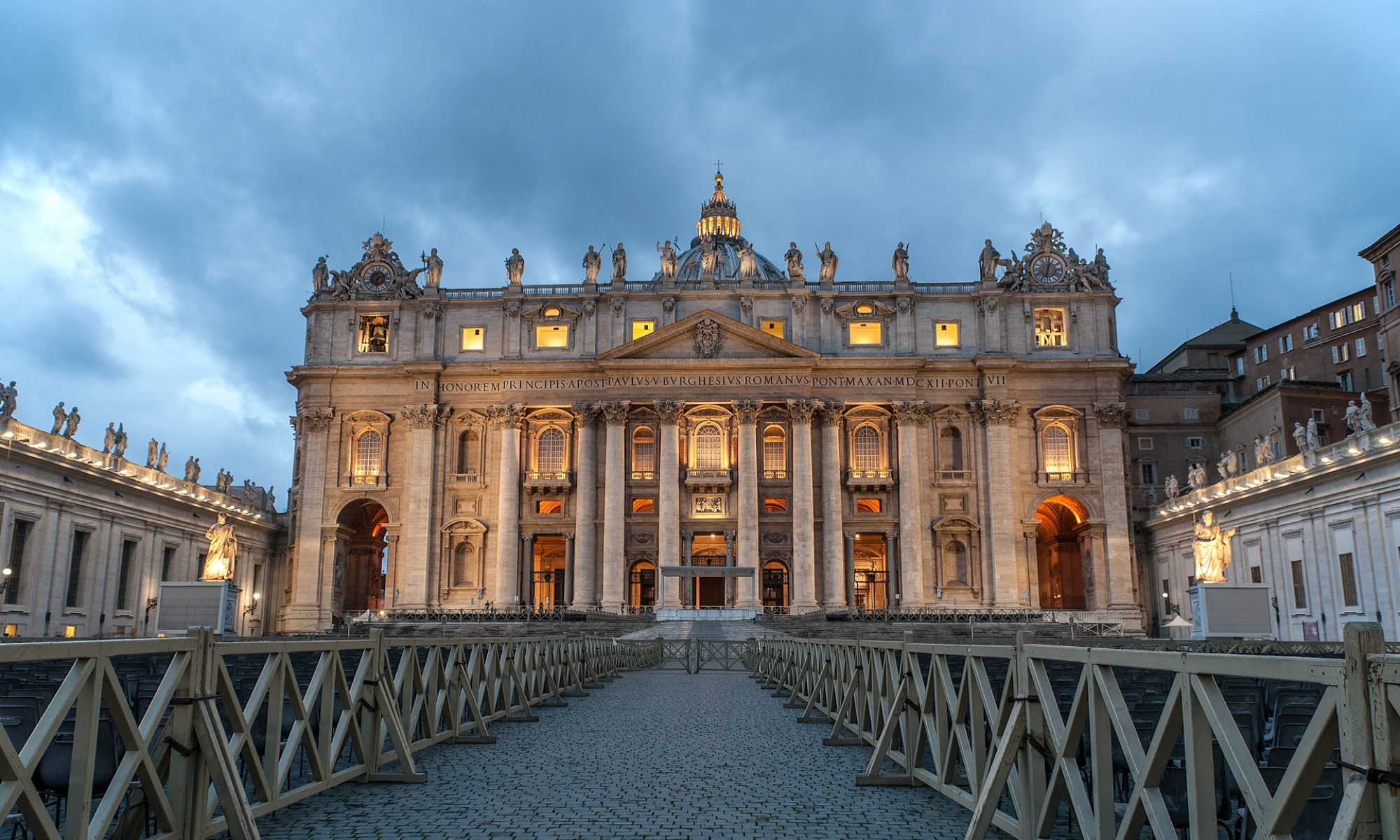At the beginning of 2011, Pope Benedict XVI announced that he was going to convene a world meeting in Assisi (Italy) to commemorate the 25th anniversary of the 1986 day of prayer for peace, launched by his predecessor John Paul II. That event saw representatives of various faith communities gathering together to pray on their own, and also in joint prayer sessions. For many observers, both Evangelicals and more traditional Catholics, Assisi 1986 was a sign of unbiblical universalism and syncretism whereby people of different faith-communities prayed (whatever prayer may mean in an inter-religious context) together under the leadership of the Pope. Critics, many of whom are also in Roman Catholic circles, argued that it is one thing to join forces to promote peace in the world, but a completely different thing to join prayers in common multi-faith petition the way it was done in 1986.
Assisi 2011
After 25 years, Benedict XVI will again invite religious leaders to come to Assisi to pray for peace and justice. Actually, the new official heading of the event is “Day of reflection, dialogue and prayer,” and it will take place on 27th October 2011. The variety of those who have confirmed their participation is impressive:
- 176 representatives of non-Christian religions (48 Muslims, 67 Buddhists, 7 Hindus, 5 Sikhs, 4 people of traditional African religions, etc.);
- 31 official delegations from Christian churches and communions (e.g. the Ecumenical Patriarchate of Constantinople, the Anglican Communion, the World Council of Churches);
- Representatives of world Judaism;
- Several secular intellectuals;
- Diplomatic delegations (a constant reminder that the Vatican is also a sovereign state with official diplomatic relationships with all the other states of the world).
Ratzinger’s assertive influence is clearly visible in the title of the event. Following criticism that Assisi 1986 encouraged syncretism, the emphasis of the 2011 meeting will be more on common reflection and dialogue between people of different religions and cultures. Prayer only comes as the final marker of the event, but it still there.
The program does not entail a common, public prayer session, but each delegation will pray or reflect (there will also be agnostic participants!) in separate rooms in St. Francis’ convent according to their beliefs and traditions. Moreover, as already indicated, Benedict XVI wanted non-believers, both agnostic and atheist, to be part of the event, involving them in the search for truth and peace. Assisi 2011, therefore, will still be an inter-religious gathering, but the scope of the meeting is larger so as to include people of good will, but not necessarily religious ones. The theme is thus expanded and the audience enlarged.
The day will include sessions with brief speeches by different participants, concluded by a short pilgrimage across the streets of Assisi by the Pope himself. This will represent a final commitment to peace symbolized by the lightening of candles, and a time for meditation in front of St. Francis’s tomb. As for the other sessions, the program will be ended by the Pope who is the convener, host and primary actor of the day. Words, languages, gestures, acts and symbols reflect the richness of the Catholic way of conceiving and implementing inter-religious gatherings which retain the centrality of the RC institution.
Continuity, discontinuity or catholicity?
Will Assisi 2011 be different than its 1986 precedent? It is likely that the measures taken by Benedict XVI will avoid overtly syncretistic practices that characterized the first event. It is certain that many words will be used to explain that each participant retains his own religious identity so as to prevent any misunderstandings.
Yet the beatification of John Paul II (celebrated on 1st May this year) will set the emotional context of the 2011 event, and major points of continuity between 1986 and 2011 will be stressed. The “spirit of Assisi”, with its “what unites us is bigger than what divides us” language, will prevail, especially for the media and public opinion. There will be little room for change in the way the event will be perceived by most people. The “spirit of Assisi” will be possibly confirmed as the only way forward as far as inter-religious relationships are concerned: i.e. setting aside differences, celebrating unity, searching for truth together, appreciating different perspectives on truth, welcoming each other as “brothers and sisters”. This appears to be the “message” of Assisi. Assisi 2011, therefore, will be both in continuity and discontinuity with Assisi 1986, but the overarching combination between 1986 and 2011 will be the expanded catholicity of Roman Catholicism: its ability to think and act globally while retaining its particularity, its ability to join people of all backgrounds without losing its profile, its ability to be center-stage in the relationship between religions and the modern world.
The goal of promoting peace and justice in the world is good and urgent. Yet is inter-religious prayer (in whatever form it takes place) a biblically viable option? Is the religious universalist bent the only way of dealing with different religious traditions? Is the Assisi-type event the best Biblically warranted way to foster peace and justice? The Roman Catholic Church can respond “yes” to all three questions. What about Evangelicals?
Leonardo De Chirico
leonardo.dechirico@ifeditalia.org
Rome, 19st October 2011

